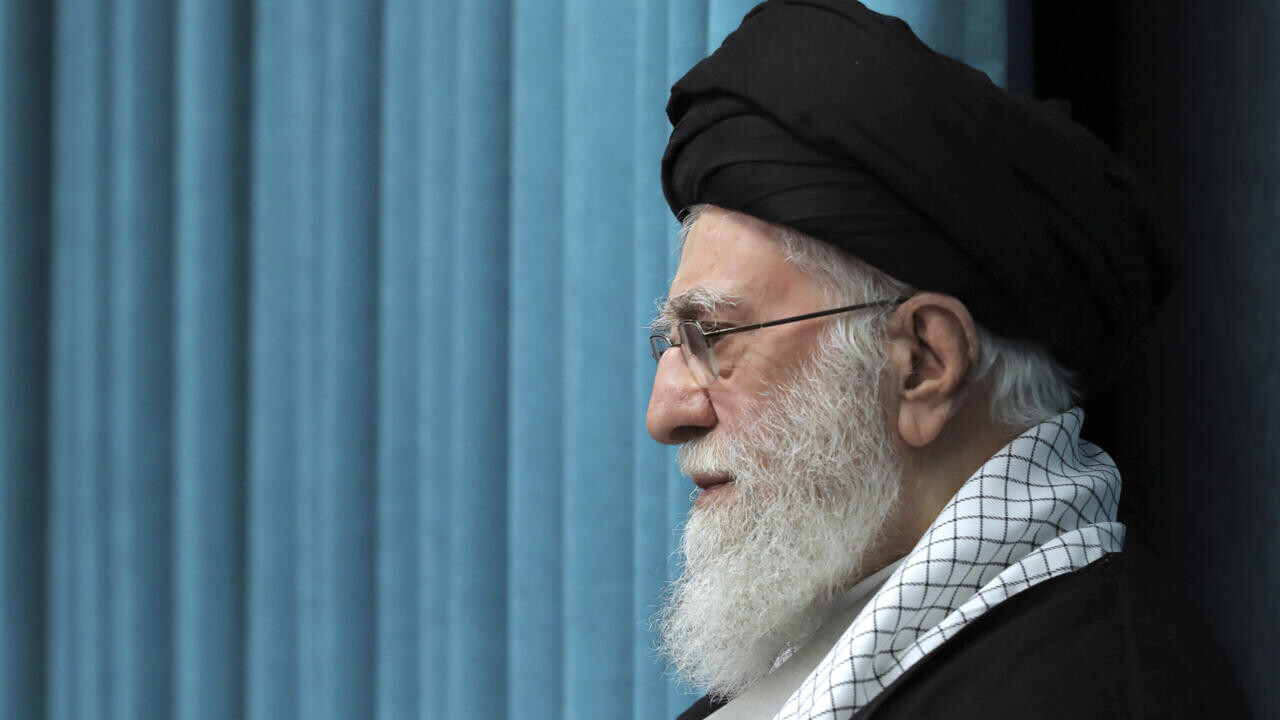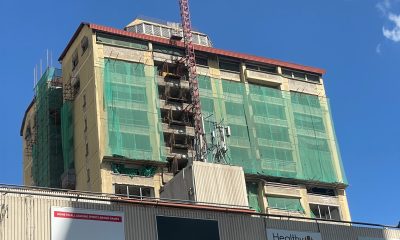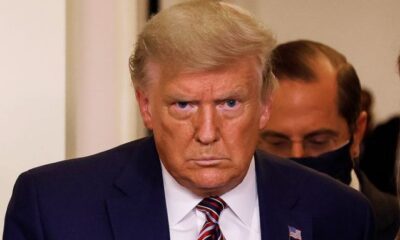World
Ali Khamenei: Backed Into a Corner, Iran’s Ruthless Leader Faces Fight For Survival
Israel’s unprecedented strikes on nuclear, military and infrastructure targets in Iran mark by far his most serious crisis yet, threatening both the clerical regime he has led for the past 36 years and his own survival.

Over several decades in power, Iran’s Ayatollah Ali Khamenei has built up regional proxy forces and a formidable missile arsenal with the aim of deterring precisely the kind of direct assaults being carried out by Israel. With his allies defanged and Israeli planes controlling the skies over Tehran, Iran’s supreme leader is now fighting for his survival and that of his regime, with few options left.
Iran’s undisputed leader since 1989, Ayatollah Ali Khamenei has weathered decades of international sanctions, near-constant regional tensions and protest movements he ruthlessly suppressed to maintain his iron grip on the Islamic Republic.
Israel’s unprecedented strikes on nuclear, military and infrastructure targets in Iran mark by far his most serious crisis yet, threatening both the clerical regime he has led for the past 36 years and his own survival.
In five days of bombardment, Israel has decapitated Iran’s top military brass, repeatedly struck its main nuclear sites, and killed many of Khamenei’s closest aides. It has also bombed other parts of the state and security apparatus as well as key energy infrastructure, triggering an exodus of Tehranis from the capital.
While Iran has responded with deadly strikes on Israeli cities, the mismatch in firepower has left Tehran at the mercy of the Israeli air force, facing the possibility of a US intervention on Israel’s side – and with no major allies to call upon.
Echoes of Iraq
Many Iranians will feel they have been there before. The Islamic Republic was just one year old in 1980 when it was dragged into a gruesome eight-year war by Iraqi dictator Saddam Hussein – who at the time enjoyed the backing of most Western and regional powers.
The enduring trauma of the Iran-Iraq war persuaded Khamenei to build a coalition of proxy forces in the region that would engage in asymmetrical warfare and, crucially, deter Iran’s foes from directly attacking its territory. For further deterrence, the Islamic Republic also rushed to build up its missile and drone manufacturing capability, acquiring what was believed to be the largest missile arsenal in the region.
Those deterrents have long allowed the hardline ruler to keep up his rhetoric of confrontation with the US and project an image of power to rival Israel’s, while keeping conflict away from Iran’s borders and giving the regime a free hand to crack down on dissent.
Since the October 7, 2023, attacks on Israel, however, Khamenei has looked on impotently as his key allies – Lebanon’s Hezbollah, Hamas in Gaza, Yemen’s Houthis and Syria’s Bashar al-Assad – have been defanged, diminished or toppled, one by one. The demise of the “Axis of Resistance” has effectively stripped Khamenei’s regime of its outer defences, allowing Israel to bring the fight directly to Tehran.
Iran’s air defences took a first pummelling when the two bitter foes exchanged missile strikes last October. With Israeli jets now in control of the Iranian air space, and free to track down Iranian missile launchers, it is unclear how long the Islamic Republic’s other key deterrent – its ballistic missiles arsenal – can sustain the fighting.
‘We won’t take him out – for now’
Khamenei, 86, has remained typically defiant in the face of the Israeli onslaught, stating on Wednesday in a post on X: “We must give a strong response to the terrorist Zionist regime. We will show the Zionists no mercy.”
Israel’s success in killing several of his top aides, however, shows just how far Israel has penetrated Iranian defences and intelligence. It has also raised the question of whether Prime Minister Benjamin Netanyahu could give an order to seek to kill Khamenei himself.
Speaking to ABC News on Monday, Netanyahu neither denied nor confirmed media reports that US President Donald Trump rejected an Israeli plan to assassinate Khamenei.
“It’s not going to escalate the conflict, it’s going to end the conflict,” Netanyahu insisted, adding that Israel was “doing what we need to do”.
The supreme leader has not left Iran since taking up the position and made his last foreign visit to North Korea in 1989 while still Iran’s president. His movements are subject to the tightest security and secrecy.
In a social media post on Tuesday, Trump claimed Washington was aware of Khamenei’s whereabouts but that it didn’t want him killed “for now”.
“We know exactly where the so-called ‘Supreme Leader’ is hiding,” the US president wrote. “He is an easy target, but is safe there – We are not going to take him out (kill!), at least not for now.”
Nuclear boomerang
While his messaging has been contradictory and mixed, Trump appears to have welcomed Israeli military action as a means to drag Iran back to the negotiating table on US terms – which he has described as Tehran’s “unconditional surrender”.
Analysts, however, have cautioned that any attempt to assassinate Khamenei could have the opposite effect, precipitating Iranian efforts to go nuclear and thereby working against the stated purpose of Israel’s offensive.
Over the years, the Islamic Republic has maintained a form of strategic ambiguity over its nuclear programme, which it has used as a bargaining chip in talks with world powers and as a warning to foes. According to Western intelligence assessments, this has involved reaching a higher degree of enrichment than is needed for civilian purposes but without actively seeking to develop nuclear weapons.
Known for blending ideological rigidity with strategic pragmatism, Khamenei has shown a willingness to bend when the regime’s survival is at stake, including on the nuclear dossier. He notably offered guarded endorsement of Iran’s 2015 nuclear deal with six world powers including the US, calculating that sanctions relief was necessary to stabilise the economy and cement his grip on power.
More than a decade earlier, amid the fallout from the 2003 Iraq invasion, Iran’s supreme leader had issued a fatwa, or religious edict, condemning nuclear and chemical weapons – though critics have questioned its real worth.
“The irony is that Khamenei, through his indecision and his supposed fatwa, has been one of the factors in Iran for not developing nuclear weapons,” said Rouzbeh Parsi, a Middle East scholar and senior lecturer at Lund University in Sweden. “If he is removed, it will destroy all chances of resuming negotiations and guarantee that Iran goes for nuclear weapons.”
Regime change
The mere fact that assassinating the Iranian leader is part of the conversation is a measure of how far Israel has pushed its paradigm shift for the Middle East, with at least the tacit support of the Trump administration. According to Parsi, it also reflects the lack of a clear strategic objective for Israel’s military operation.
“Ultimately, the political solution is either a negotiation with Tehran or a removal of the Islamic Republic,” he said. “The Israelis have made clear they don’t want any type of negotiation with the Iranian regime, but they also cannot bring about regime change without US help.”
He added: “The US could indeed destroy the Islamic Republic, which begs the question that these wars never answer beforehand, nor explain afterwards, namely: what would replace it?”
In an interview with Fox News on Monday, Netanyahu suggested that “regime change” could be the outcome of the Israeli strikes, while insisting that it would be for the Iranian people to bring this about. He claimed that “80 percent of the people would throw these theological thugs out” once they had realised the regime’s weakness.
Writing in Le Monde, Iran expert Farid Vahid said the “rupture between Iran’s people and the regime has grown so deep” the Islamic Republic can no longer count on patriotic sentiment to drum up support among the population. However, the Iranian opposition, both at home and in exile, remains riven by division, and while Persian-language television channels based abroad have broadcast images of groups shouting anti-Khamenei slogans, there have been no reports of mass protests.
“The idea that this ends in a popular uprising that changes the regime or gives power to someone in the Iranian opposition abroad has no basis in reality,” said Iran expert Arash Azizi, a senior fellow at Boston University, in an interview with AFP.
Iran watchers say a more plausible outcome would be for elements within the regime to seek to wrest control from Iran’s ageing supreme leader.
“Khamenei is at the twilight of his rule, at the age of 86, and already much of the daily command of the regime is not up to him but to various factions who are vying for the future,” said Azizi. “This process was already underway, and the current war only accelerates it.”
(France24)
Kenya Insights allows guest blogging, if you want to be published on Kenya’s most authoritative and accurate blog, have an expose, news TIPS, story angles, human interest stories, drop us an email on [email protected] or via Telegram
-

 News1 week ago
News1 week agoKenyan Driver Hospitalized After Dubai Assault for Rejecting Gay Advances, Passport Seized as Authorities Remain Silent
-

 Investigations5 days ago
Investigations5 days agoMoney Bior, Lawyer Stephen Ndeda Among 18 Accused Of Running An International Fraud Ring Involved With Scamming American Investor Sh500 Million
-

 Investigations4 days ago
Investigations4 days agoNestlé Accused of Risking Babies’ Health in Africa with ‘Toxic’ Cerelac Product Sold Highest in Kenya
-

 Business1 week ago
Business1 week agoConstruction Of Stalled Yaya Center Block Resumes After More Than 3 Decades and The Concrete Story Behind It
-

 Investigations2 weeks ago
Investigations2 weeks agoHow Somali Money From Minnesota Fraud Ended In Funding Nairobi Real Estate Boom, Al Shabaab Attracting Trump’s Wrath
-

 Investigations2 weeks ago
Investigations2 weeks agoCNN Reveals Massive Killings, Secret Graves In Tanzania and Coverup By the Govt
-

 News7 days ago
News7 days agoTSC Announces Major Policy Shift To End Transfer Of Promoted Teachers
-

 News3 days ago
News3 days ago48-Year-Old Woman Who Pushed 25-Year-Old Boyfriend To Death From 14th Floor Kilimani Apartment Arrested














